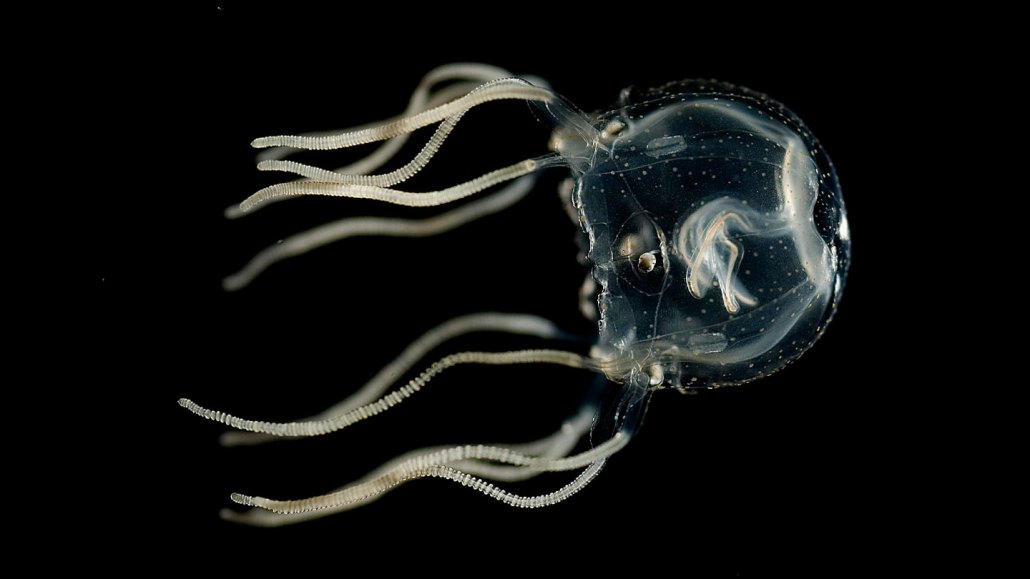
Fingernail-sized Caribbean box jellyfish use their 24 eyes to spot and dodge mangrove roots that might damage their fragile bodies.
J. Bielecki

Fingernail-sized Caribbean box jellyfish use their 24 eyes to spot and dodge mangrove roots that might damage their fragile bodies.
J. Bielecki